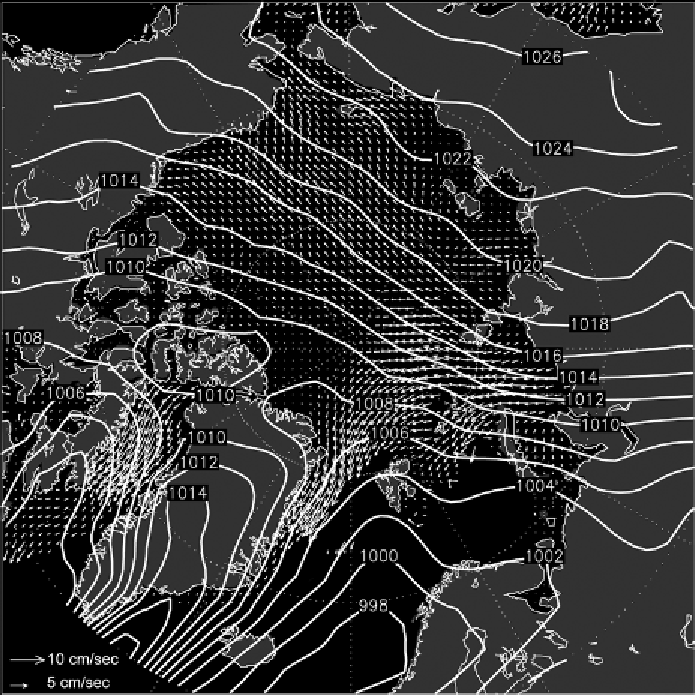Geoscience Reference
In-Depth Information
Figure 7.14.
Mean pattern of sea ice drift in the Arctic for January 1991, based on
SSM/I retrievals with overlay of mean sea level pressure from NCEP/NCAR (ice drift
field courtesy of C. Fowler, University of Colorado, Boulder, CO, sea level pressure
field by the authors).
of ridges and keels. By the same token, the large-scale vorticity field masks local
deviations from the general rotational flow. Note also that estimates of ice deforma-
tion are prone to error as they are sensitive to small errors in the velocity field.
Using results from Thorndike and Colony's (
1982
) linear regression model, one
can obtain estimates of the large-scale divergence and convergence from the geo-
strophic wind at sea level and the turning angle of the ice velocity with respect to the
geostrophic wind. Because the turning angle is to the right of the geostrophic wind,
cyclonic ice motion is associated with divergence, and anticyclonic motion is asso-
ciated with convergence. As discussed, the turning angle is larger in summer, when
the ice motion approaches “free drift,” and smaller in winter, when internal ice forces
are strong. Serreze et al. (
1989
) applied the Thorndike and Colony approach to esti-
mate ice divergence in the Canada Basin during summer. They found that because

